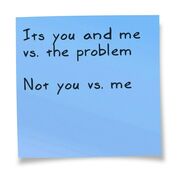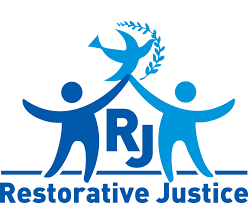My classroom management system is based in the establishment of student-created class norms, and centers around receptiveness to student needs and dedication to the use of restorative practices.
Student-Generated Classroom Norms
I believe that the establishment of classroom norms is an important aspect of classroom management that gives students ownership and can stop several behavioral problems before they begin. Experts agree that classroom rules are more effective, manageable, and meaningful when students contribute to their creation (Weinstein & Novodvorsky, 2015); in my classroom, students generate the norms and expectations for the year as a class, and work together with me to hold everyone in the room accountable to maintaining them.
Along with student-generated norms, I utilize a consistent set of class routines that help students to understand exactly what is expected of them when they walk into my room every day. These routines include our Sharing Circle, a bell ringer and subsequent class discussion, mini-lecture, independent or group work time, and an exit ticket or artifact to be turned in.
Included below is a case study on classroom routines, which I completed as part of my master's coursework at Michigan State.
Along with student-generated norms, I utilize a consistent set of class routines that help students to understand exactly what is expected of them when they walk into my room every day. These routines include our Sharing Circle, a bell ringer and subsequent class discussion, mini-lecture, independent or group work time, and an exit ticket or artifact to be turned in.
Included below is a case study on classroom routines, which I completed as part of my master's coursework at Michigan State.
| understanding_rules_and_routines.pdf | |
| File Size: | 143 kb |
| File Type: | |
Eric Toshalis's book, "Make Me!" has had a significant impact on how I approach student behavior in my class. Toshalis argues throughout his book that student "misbehavior" is not a result of a lack of desire to learn, but a reaction to needs not being met or resistance against structures that students perceive as oppressive or unfair. Inspired by this work, my approach to behavioral issues in my classroom is to find the root cause of misbehavior and engage with it, not merely punish away actions that I do not like.
This takes many forms in my actual classroom. A common type of passive resistance I see in my room is that students have their heads down or will sleep in class, often because my students work outside of school and are tired when they come to class. Instead of taking away points or punishing students who have their heads down, my classroom has a set of clipboards that sleepy students can use to take their notes standing up or pacing in the back of the room. This addresses the root cause of students having their heads down - sleepiness - without harming the students or their grades.
Often, the root causes of student resistance are more difficult to see. Social-emotional issues, problems at home, or other outside factors are much more difficult to address. In my efforts to understand some of the other forms of resistance that occur in my classroom, I have completed a case study on two students in my classroom, which is linked below.
This takes many forms in my actual classroom. A common type of passive resistance I see in my room is that students have their heads down or will sleep in class, often because my students work outside of school and are tired when they come to class. Instead of taking away points or punishing students who have their heads down, my classroom has a set of clipboards that sleepy students can use to take their notes standing up or pacing in the back of the room. This addresses the root cause of students having their heads down - sleepiness - without harming the students or their grades.
Often, the root causes of student resistance are more difficult to see. Social-emotional issues, problems at home, or other outside factors are much more difficult to address. In my efforts to understand some of the other forms of resistance that occur in my classroom, I have completed a case study on two students in my classroom, which is linked below.
| understanding_student_resistance.pdf | |
| File Size: | 158 kb |
| File Type: | |
Restorative Practices
Restorative justice practices are an element of teaching that I have recently adopted and plan to continue utilizing throughout my career. Restorative justice is an element of school culture that focuses on identifying harm done and allowing all parties the opportunity to respond and attempt to repair the harm, rather than just punishing offenders.
In my classroom, this starts with a Sharing Circle at the beginning of every class where students answer a question or two about how they are feeling that day, before the lesson starts. This allows me, the teacher, to get a read on my students and be able to anticipate who is having a good day and who might need some extra support in my room that hour.
When conflicts arise or a behavior occurs that violates classroom or school norms, or otherwise causes harm to a member of our school community, a restorative conversation occurs in order to address the behavior. This conversation follows the model outlined in the image above, and focuses on repairing harm and becoming aware of our impact on other people. This approach to classroom management and school discipline has been shown to teach students empathy and accountability, and be more effective than reward and punishment systems in improving student behavior (Cortez, 2018).
Resources
Cortez, G. (2018, March 16). Restorative Justice. Lecture presented at Chicago Public Schools Young Men of Color Summit in DePaul University, Chicago.
Toshalis, E. (2015). Make Me!: Understanding and engaging student resistance in school. Cambridge, MA: Harvard Education Press.
Weinstein, C. S., & Novodvorsky, I. (2015). Middle and secondary classroom management: Lessons from research and practice. New York, NY: McGraw-Hill Education.



